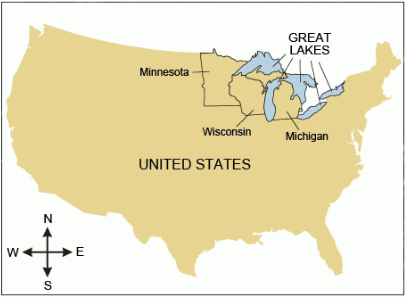题目解析:
【题目翻译】根据第4段,温暖干燥的冬天怎么会影响木材生产?
A:某些树木会变得干燥,产生低质量的木材。
B:溪流和湖里没有足够的水把木头用筏子运到磨坊。
C:把原木运到小溪和湖泊会更加困难。
D:春天河水不足以给磨坊发电。
【判断题型】题目问的是文章中的具体细节信息,故根据题目问法可以判断本题为事实信息题。
【关键词定位】由“warm,dry winter interfere ”定位到“If nature did not cooperate—if the winter proved dry and warm, if the spring thaw was delayed—production would suffer. To counter the effects of climate on lumber production, loggers experimented with a variety of techniques for transporting trees out of the woods.”
【逻辑分析】伐木在冬天进行,雪和冰使得用雪橇将原木拖到河流岸边变得更加容易。一旦溪水和湖泊解冻,工人们用木筏运载木头到工厂,夏天木头在那儿被砍成木材。如果自然不配合——如若冬天又干又暖和,春天解冻延迟了——生产将遭受困难。
【选项分析】
A 选项原文没说树木变干,排除。
B 选项错误,冬天是靠冰上雪橇来运输的,并不是水不够。
C 选项的“difficult transport”,说明主要影响的是 transporting trees out of the woods,与题目相对应。
D 选项错误,mill 不是靠 river 为动力的,原文未提及。


 In nineteenth-century America, practically everything that was built involved wood.Pine was especially attractive for building purposes.It is durable and strong, yet soft enough to be easily worked with even the simplest of hand tools.It also floats nicely on water, which allowed it to be transported to distant markets across the nation.The central and northern reaches of the Great Lakes states—Michigan, Wisconsin, and Minnesota—all contained extensive pine forests as well as many large rivers for floating logs into the Great Lakes, from where they were transported nationwide.
In nineteenth-century America, practically everything that was built involved wood.Pine was especially attractive for building purposes.It is durable and strong, yet soft enough to be easily worked with even the simplest of hand tools.It also floats nicely on water, which allowed it to be transported to distant markets across the nation.The central and northern reaches of the Great Lakes states—Michigan, Wisconsin, and Minnesota—all contained extensive pine forests as well as many large rivers for floating logs into the Great Lakes, from where they were transported nationwide.